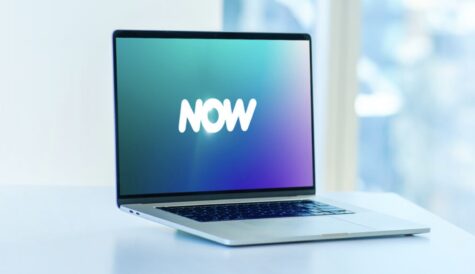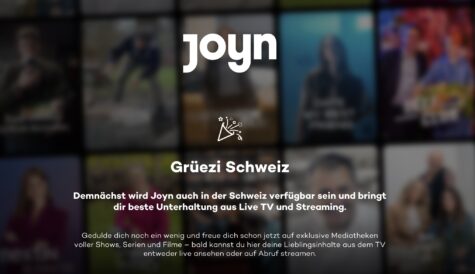Second coming: the evolution of the companion screen
With the recent disappearance of first-generation second-screen services GetGlue and IntoNow, what does the future hold for the companion app space and is anyone getting it right? Andy McDonald reports.
The huge growth of both the smartphone and tablet markets in recent years has brought with it a profound shift in viewing habits. According to recent Nielsen stats, 84% of US smartphone and tablet owners now say they use their devices as second screens while watching TV – looking up information about programmes they are watching, researching or buying goods and interacting with friends.
Though second-screen strategies for those working in the TV industry are no longer a new phenomenon, the companion screen space appears to be undergoing a period of change. Recent months have seen the consolidation, and even closure, of some of the first crop of dedicated second screen services.
US TV-guide app i.TV bought TV check-in service GetGlue in November and announced in January it was rebranding the service as tvtag. Also this year, second-screen TV service Viggle acquired Dijit Media, the firm behind personalised TV programming guide NextGuide. Meanwhile, Yahoo! decided to close down its dedicated second-screen TV app IntoNow, with plans to instead integrate the technology into other products like the Yahoo Sports iOS7 app.
With once-promising services having fallen by the wayside, arguably the second-screen TV space is yet to have a runaway success story – unless you look to the big social networks. Roughly one million Americans turn to Twitter each day to discuss TV, according to Nielsen, while a recent SecondSync-Facebook report claims that up to 25% of TV audiences post content related to the TV show they are watching on Facebook, with 80% of this chatter sent from a mobile device.
This aside, the second-screen space has become a fragmented landscape where broadcasters, programmers and platform operators are all vying for attention on mobile screens with a combination of broad-based branded platform apps, specific show apps, and apps that offer controls such as remote programme recording and channel changing options.
But what is the future of the dedicated second-screen space and is anyone getting it right – particularly from a return on investment point of view?
The hype cycle
Tom McDonnell is CEO of Monterosa, a technology firm that makes a social interaction platform called LViS, which is designed for broadcast firms to make, manage and monetise mobile experiences. Though the UK-based firm has worked with the likes of Sky, the BBC, Channel 4 and Endemol, and is often name-checked in relation to the second-screen space, McDonnell feels that terminology is unhelpful for where the industry is today.
“We’ve made quite a conscious decision to drop the use of the term ‘second screen’,” says McDonnell. “It was really a term that we pre-dated anyway. We’ve always been in the business of interacting with fans of sport, entertainment, whatever, and it’s always been the super-fans of that subject matter that get involved. The device that that occurs through, or the screen that that happens on, is kind of irrelevant. It just so happens that it’s a phone now. When we started it was a computer.”
Though technology and device usage has evolved, McDonnell claims that industry, and industry watchers, have been distracted by the buzz around so-called ‘second screening’ – “misinterpreting the audience behaviour and missing the point that it’s just all about making the TV show better.” He claims that part of this “distraction” has rested with the consumer-facing startups, eager to grab attention from broadcasters and monetise this space independently. “They’ve generated a lot of hype and have largely failed to capitalise on it,” says McDonnell.
Zeebox is one service that has arguably been on the receiving end of the hype-cycle surrounding the second screen. Bursting onto the scene in 2011, having been developed by former BBC iPlayer boss Anthony Rose and former EMI board director Ernesto Schmitt, the service looked poised to revolutionise the TV industry, dragging the traditional broadcast model into the 21st century – whether the broadcasters liked it or not.
However, what has followed has instead been a period of growth and development for Zeebox. Expanding from its UK base to Australia and the US, the firm has sought partnerships from the very broadcasters and platform providers they once looked likely to disrupt, and as chief technology officer Rose explains, the firm is the process of trying to engage TV audiences in different ways. [icitspot id=”161372″ template=”box-story”]
“There’s obviously been a lot of press recently about the consolidation of social TV and ‘is Twitter or Facebook winning in social TV?’ I have to say, we’ve never said second-screen is social TV. We’ve said second-screen is a range of things that consumers are looking for: they’re looking for a better way to find things to watch; they’re looking for something that will act as a remote control for their TVs and set-top boxes; they’re looking for a way to engage in a community around a show; and they’re looking for news and information.”
While Zeebox may have initially been focused on live, second-screen participation, Rose says that the service is now more focused on the social experience around the TV shows themselves. A recent major update to the app added MyTV, a personalised content feed based on the shows a user follows, with targeted recommendations, fan-community TV rooms and aggregated articles, news, and information. Zeebox is now even syndicating its production tools, synchronised show enhancements and TV chat rooms to its broadcast partners – including Fox, Discovery, NBC and Viacom.
Ad dollars
In a similar way to Zeebox, Shazam has set itself up as a broad-based second screen app, though its interest in TV has been a “natural progression” from its origins as a music discovery tool, according to vice president of advertising sales for the EMEA and APAC regions, Miles Lewis. He says that the success of the service has been in its relevance to the user. “Nothing we do is push – it’s totally down to you to pull,” says Lewis, claiming that Shazam users “want to get involved, want to interact, otherwise it just won’t work.”
Noticing that Shazam users already used the app to find out the names of songs that played on TV, the firm looked to capitalise on this, launching Shazam for TV to offer more programme-specific information – including related Tweets – about given shows. Lewis says that Shazam’s efforts in this area are currently focused in the US, where it has latched onto major events like the Super Bowl and the Grammys and is now “working with all of the major networks”. As evidenced by Shazam’s hiring of former BBC iPlayer exec Daniel Danker last year, Lewis says TV is a “massive play” for the firm.
A likely part of the appeal for Shazam when it comes to TV is the possibility of tapping into the massive pre-existing broadcast ad market, offering multiscreen and interactive extensions for campaigns. This is something Shazam is focused on doing globally, having already worked with major brands including Jaguar and Home Depot. “We’ve done 28 campaigns now in the UK alone – that’s since we launched with ITV with Cadbury’s and Pepsi in May 2012,” says Lewis.
This multiscreen ad opportunity has clearly not been lost on the broadcasters themselves, and many have also started to launch their own platform apps in a bid to assert greater control over the second screen experience around their shows.
In the UK, terrestrial broadcasters Channel 4 and ITV have each started to experiment. ITV has kept dedicated apps for primetime competition shows The X-Factor and Britain’s Got Talent, but last year launched a redesigned version of ITV.com to offer viewers a consistent second screen for all ITV programming and develop and trial new ad formats. Similarly, in 4Now, Channel 4 has a dedicated centralised app to accompany its channels and programming that supports interactive sponsorship opportunities and audio-triggered, real-time ads, synchronised with ads on the main screen.
Taking back the power
Stephen Grant, director of online for TV3 in Ireland says it too opted to launch a broad, channel-focused app in order to help control viewers’ online experience, tap audience data and take advantage of new commercial opportunities – like companion advertising. “The word we’re using is ‘repatriate’ – we feel that TV is generating a lot of online activity and it’s going elsewhere. We’d like to bring it back into the TV space if we can. What we try to do is almost replicate what people were doing online while they are watching TV and pro-actively serve them a whole lot of this extra information,” he says.
TV3’s Showpal app launched for iOS devices on October 17 and in its first four months notched up just under 50,000 downloads. “That’s a reasonably decent app-download number for a market the size of Ireland. It’s probably the equivalent of around one million downloads in a UK app store context,” reasons Grant.
Though he admits that TV3 hasn’t “quite cracked” the service yet and is continuing to develop the offering, he says that the app already works well with certain categories of programming – for instance live football, where TV3 can control the production, the two-screen experience, and use on-screen prompts and the presenter to encourage users to interact. Late night current affairs show Tonight with Vincent Browne and recently launched quiz show The Lie have also fared well, Grant says. [icitspot id=”161412″ template=”box-story”]
Technology firm and second screen app producers Axonista were tasked with making the Showpal app. Axonista CEO Claire McHugh believes that while there’s no one-size fits-all model for the second screen, launching a platform that works across the whole broadcast schedule can make sense financially, as support for new shows can be deployed quickly without the expense of developing a show app from scratch.
“Having one app that is able to do slightly different things for shows is probably a good place to be for anyone who’s investing in the technology side of it, but also for the viewer, because it’s something that you’re familiar with. There is different stuff to do in each show, so you come back for different shows that you like, and it’s a slightly different experience,” says McHugh.
Though TV3 is aiming for a mainstream audience with its Showpal app, Grant says that the app can make cost-sense with even just a very small committed user base. “What we’re aiming to get is 1% of the TV viewership engaged in our app,” he says. These are numbers TV3 is reaching for some shows, but aims to replicate across its entire peak-time schedule. “Because TV viewing is such a mass-market medium. It can certainly make sense in its own right commercially at 1% of viewing.”
“My belief is that broadcasters should take more ownership and control of that [second screen] space – that’s what we’re looking to do with Showpal, and I think that’s what other broadcasters should also be doing,” says Grant, urging others to “control that space more than giving a free run to the Googles and the Twitters and the Zeeboxes.”
Positive evolution
While it can be expected that some broadcasters will see eye-to-eye with independently-launched TV-based services like Zeebox, Rose points out that the channel-agnostic approach can have meaningful benefits from an audience point of view – giving broadcasters a valid reason to embrace its wider-reaching platform.
“It’s always been a quandary for broadcasters – do you partner with a cross-channel, cross-platform app such as Zeebox, do you make something for your own channels, or do you make an app for each show,” says Rose. “When it comes to second screen, I think the pendulum started with broadcasters creating an app for each show. We’ve seen in the US some broadcasters have made more than 200 apps and it’s now widely referred to as the app graveyard – these apps from several seasons back. They’re not maintained, they don’t work often, they’ve got old content, some post was last updated 185 days ago. It’s not good. So that then moved to broadcasters sometimes creating their own channel-based apps. But I think it’s hard to get traffic to a channel-based app. People don’t just watch one channel, they watch multiple channels, and so the pendulum kept swinging towards the more general-purpose app.”
Though Rose concedes that the “pendulum still moves, and people are getting different results”, he says it’s possible that “the state-of-play today says a few main shows get dedicated apps and others become syndicated experiences or experiences inside platform apps such as Zeebox.”
However, for Monterosa’s McDonnell the solution is more radical and more simple. “I don’t think that apps – downloadable, native iOS or Android apps – are the way forward for TV shows,” he says, claiming the costs of creating, delivering and maintaining these make them unfeasible.
“My argument to broadcasters is don’t bother making a dedicated second-screen app. Just look at the simplest user-journey possible, and that’s through the web-browser,” McDonnell says. He claims it’s already “very well proven” that sending an audience to an interactive, mobile-enabled site will drive more traffic than forcing users to download a native app.
McDonnell is equally dismissive of all-encompassing consumer-facing or broadcaster apps, claiming they produce “generic experiences” that have not worked. “They have largely failed in this space because fans of a specific subject matter or TV show don’t associate [with] that generic proposition,” he says. “The desire to either hit a URL that’s not associated with what you’re a fan of or to download a generic app – there’s no motivation.” What McDonnell says Monterosa is instead keen to offer is a set of customisable tools for creating interactive web experiences that are both cheap and quick to launch – a mission it is working on for TV2 in Norway with specific deployments.
Whichever vision of the second-screen future comes to pass, the work going on in this space implies that we are still at an early stage of development – despite there already being some shakeout among the US consumer-facing players. A recent Ofcom-commissioned report assessing the impact of the second screen in the UK counted some 40 apps specifically designed for use in connection with TV, with others, such as Twitter, appropriated for TV, and said the nascent market is “developing fast”.
“I think next year you’ll probably see a lot of really engaging interactive great experiences that will really change the way that people watch television and expect to watch television,” predicts Axonista’s McHugh. After all, in a world where media consumption happens across many screens and mediums “attention is the new currency.”
Zeebox’s Rose claims that there is no single “magical proposition” for the second screen, but is upbeat about the opportunities that remain in this space. “I think people look for the sweet spot, the use-case that will be truly viral. I don’t think anyone’s quite found that yet, but just like California in the 1880s, it doesn’t mean there’s no gold in them hills. There is definitely gold in them hills, and a lot of prospectors are out there and will find it.”



